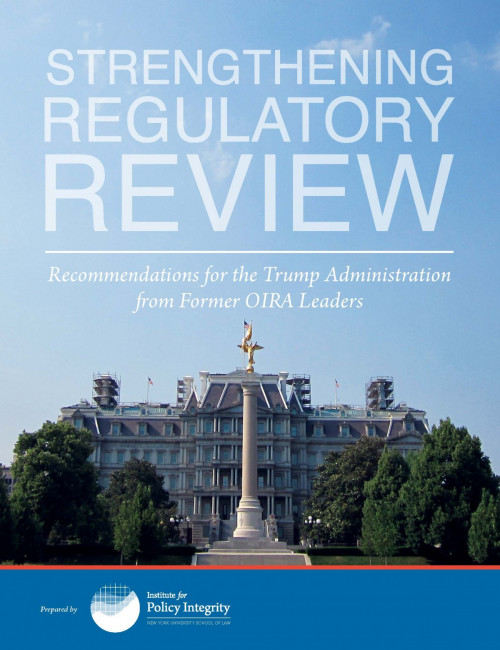-
Comments to Massachusetts Department of Environmental Protection on Greenhouse Gas Reductions
The Massachusetts Department of Environmental Protection (“MassDEP”) has proposed a set of regulations to limit the greenhouse gas emissions from electric power plants, natural gas pipelines, government-owned transportation equipment, and utility-owned switchgear equipment. MassDEP has also proposed a new requirement that retail sellers of electricity purchase gradually increasing amounts of clean energy, along with non-binding targets for greenhouse gas emissions from the transportation sector.
In our comments to MassDEP, we offer three suggestions to ensure these regulations cut global greenhouse gas emissions in a cost-effective way. First, we encourage MassDEP to prevent potential emissions leakage to other states in the Northeast’s Regional Greenhouse Gas Initiative (“RGGI”) program. Second, we recommend the regulations should be technology-neutral and use a flexible compliance system. Third, we recommend enforceable emissions limits on the transportation sector rather than non-binding targets, especially considering that the state’s emissions from transportation sector are almost twice those of the electric sector.
-
Public Comments to OIRA on Regulatory Review Guidance
President Trump’s recent Executive Order on reducing regulation directed agencies to identify two existing regulations to repeal when issuing a new regulation, and to offset all incremental costs of new regulations. On February 2, 2017, the Office of Information and Regulatory Affairs (OIRA) released interim guidance on how it plans to implement the Executive Order, and we submitted comments on the guidance.
-
Comments to Federal Energy Regulatory Commission on Proposed Rulemaking for Electric Storage Participation in Markets Operated by RTOs and ISOs
In November 2016, the Federal Energy Regulatory Commission (FERC) announced its intent to ease the process for energy storage and distributed energy resources to participate in wholesale electricity markets. The proposed rule would require regional transmission organizations (RTOs) and independent system operators (ISOs) to revise their tariffs to energy providers in order to promote technology neutrality. In comments on the rule, we recommend that in addition to adjusting these tariffs, FERC should take more steps to fully realize the benefits that these technologies could provide for wholesale markets. We recommend that the Commission explicitly clarify the benefits for which it compensates these technologies; allow states to compensate for distribution-side benefits; eliminate location-based constraints on resource participation while recognizing the importance of location in optimally dispatching these services; encourage coordination between RTOs/ISOs and state regulators; and promote advanced metering technology to increase efficiency in how energy is dispatched.
-
Policy Integrity Files Brief in Case Challenging EPA’s Mercury and Air Toxics Standards
In 2012, EPA issued the Mercury and Air Toxics Standards (MATS), which limit coal- and oil-fired power plants’ emissions of mercury and other hazardous air pollutants. In their most recent challenge to the rule, Petitioners seek to obscure the fact that regulating power plants’ emissions of hazardous air pollutants overwhelmingly benefits society by asking the U.S. Court of Appeals for the D.C. Circuit to ignore or discount large portions of EPA’s analysis—namely, its consideration of indirect benefits (sometimes called ancillary benefits or co-benefits) and unquantified benefits. But, as our amicus brief points out, EPA’s consideration of indirect benefits and unquantified direct benefits is consistent with the Clean Air Act, past court decisions, federal cost-benefit guidelines, economic best practices, and regulatory precedent. Overall, we argue that the agency’s cost-benefit analysis was properly conducted and more than satisfies its obligation to consider costs when determining whether regulation of power plants’ hazardous emissions is “appropriate and necessary.”
-
Brief for Challenge to EPA’s Carbon Standards for New Power Plants
The EPA’s Carbon Pollution Standards for New Power Plants limit carbon dioxide emissions from new, modified, and reconstructed plants. A group of state attorneys general and energy companies have filed suit challenging the standards on several grounds. Policy Integrity submitted an amicus brief in support of EPA.
-
Comments to California Air Resources Board on 2030 Target Scoping Plan Draft
This summer, California extended its greenhouse gas emissions reduction program to 2030 with two companion bills. The legislation modifies how the Air Resources Board (ARB), the state agency responsible for regulating air pollution, should assess proposed policy measures and prioritize goals in designing regulations. ARB staff released a preliminary draft of the scoping plan for how to meet the new 2030 targets in early December and is expected to release a second draft for comment in mid-January. We submitted comments on the December draft, making recommendations on how to structure the scoping plan’s economic analysis to best achieve the goals laid out in ARB’s new mandate.
-
Comments on Distributed Energy Valuation Methods in New York
The New York State Public Service Commission’s “Reforming the Energy Vision” initiative, an effort to modernize New York’s electricity policy, seeks to integrate distributed energy resources (DERs) into the state’s energy supply. The Commission sought proposals on how to compensate these producers of electricity for the full value that they provide to the electric grid. We submitted joint comments with the Environmental Defense Fund on an appropriate valuation methodology. We encourage the Commission to include the full range of environmental benefits of DER, such as reduced air pollution, and to ensure consistency across the Commission’s other programs and across all technologies. This work builds on our earlier comments on unbundling price signals to compensate DER for the time-based, locational, and environmental benefits they provide.
-
Comments on the Department of Energy’s Use of the Social Cost of Carbon
In a proposed set of energy efficiency standards for refrigeration systems and residential furnaces, the Department of Energy (DOE) used the Social Cost of Carbon (SCC) to value the climate benefits of more efficient technologies. DOE did not, however, incorporate this benefit for other greenhouse gases such as methane. We recently submitted joint comments with the Environmental Defense Fund, Natural Resources Defense Council, and Union of Concerned Scientists to reaffirm the use of the SCC. We also encourage the agency to monetize the benefits of other greenhouse gas reductions, such as through the existing Social Cost of Methane methodology; and to continue to update these estimates to reflect the latest science and economics on the costs of climate change damages.
-

Strengthening Regulatory Review
Recommendations for the Trump Administration from Former OIRA Leaders
This report contains a set of recommendations for the Trump Administration that, if implemented, would strengthen the process of regulatory review. These recommendations reflect the general consensus of a group of former Administrators and Acting Administrators from the Office of Information and Regulatory Affairs who served under both political parties.
-
Comments to EPA on the Clean Power Plan/Clean Energy Incentive Program
We recently submitted comments to the Environmental Protection Agency on the Clean Energy Incentive Program (“CEIP”). The CEIP is a voluntary early action program to help states move forward on Clean Power Plan compliance and energy market planning. Clean Power Plan opponents have argued that it is inappropriate for EPA to move forward on its CEIP guidance because the Supreme Court has stayed the Clean Power Plan.




